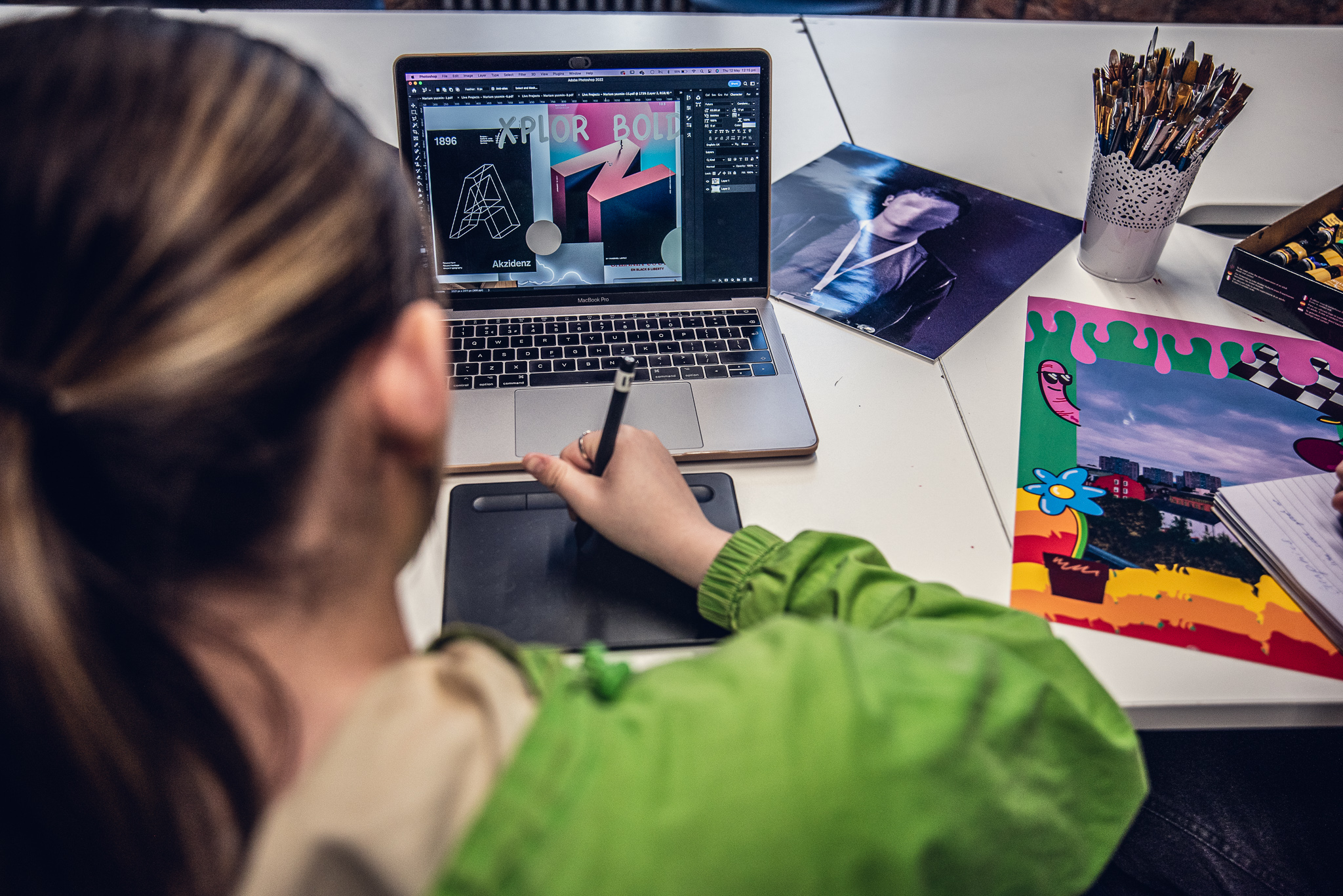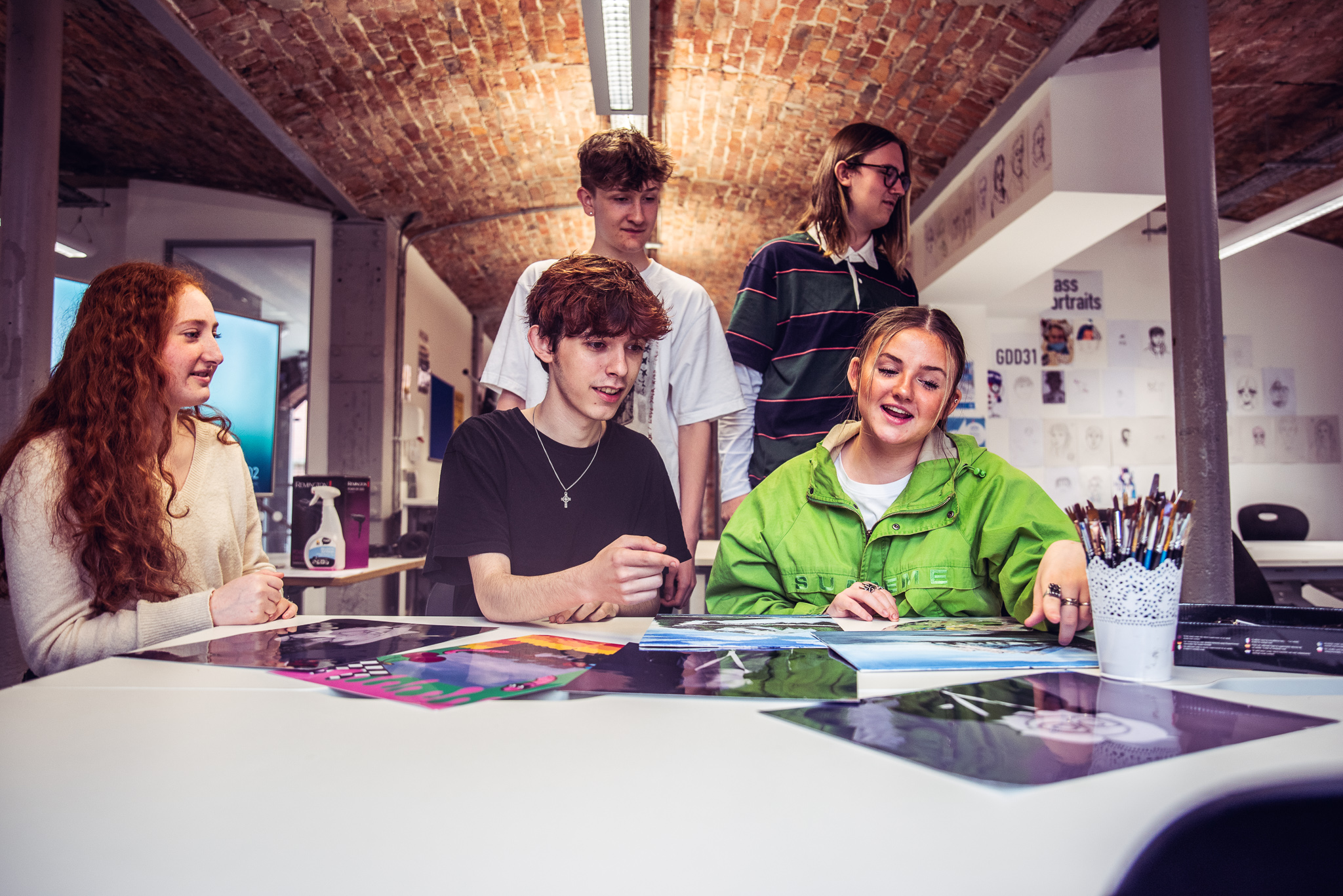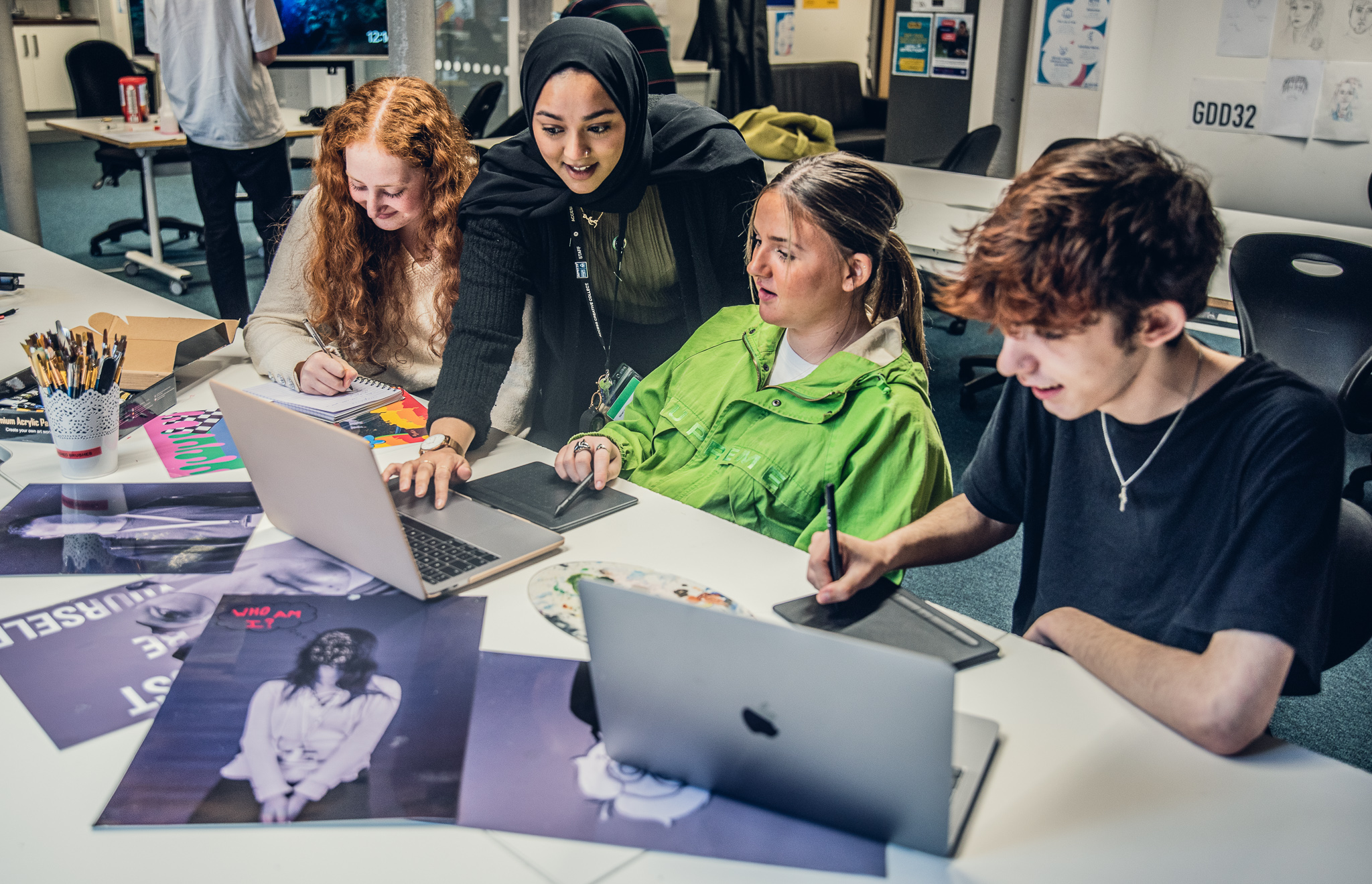While the field is competitive, the increasing need for brands to communicate visually has expanded career options for graphic designers. What are the options for those interested in this field?
![]()
Are Graphic Design jobs in demand?

Whether crafting compelling social media campaigns or refining a company’s brand, graphic designers play a pivotal role in business growth.
With a shift towards boosting online presence, the demand for graphic designers is solid, with a range of industries – from advertising to tech startups – actively seeking design talent.
The future is bright for graphic designers, worldwide. Estimates suggest that the global graphic design sector’s market size is $43.4 billion and the demand for these skills is set to increase “3% by 2031.”
![]()
Graphic Design careers
From print media to web design, the world of graphic design is varied. Graphic designers aren’t limited to any single space as several specialisations are possible.
Graphic Designer

Traditional Graphic Designers create visual concepts, either using software or by hand, to communicate ideas that inspire, inform, and captivate consumers. Their work includes defining work briefs and creating graphics.
This could cover illustrations, logos, layouts, and photos. The role demands creativity and a sharp eye for aesthetics and detail, making them vital for various industries such as publishing, advertising, and product design.
Web Designer

Web Designers specialise in creating visually striking and user-friendly websites. They focus on layout, colour scheme, and the unique visual elements of a website, ensuring that the site is attractive and intuitive for users.
With digital marketing becoming increasingly central to business operations, the demand for skilled web designers is on the rise. According to Glassdoor, the average base pay for web designers in the UK is £29,120 as of 2024. Their ability to combine technical skills with artistic design is crucial in maintaining the competitiveness and relevance of businesses online.
Digital Marketing Designer

Digital Marketing Designers play a pivotal role in creating the visual strategy for online marketing campaigns. They work closely with marketing teams to create compelling graphics and visual content for social media, email marketing, online ads, and more.
Their designs are aimed at driving engagement, increasing brand awareness, and ultimately boosting sales conversions. Digital Marketing Designers earn an average of £41,829 in the UK, as per Glassdoor.
Advertising Designer

Advertising Designers are the creative forces behind advertising campaigns. They develop the visual aspects of advertising strategies, creating eye-catching graphics, and layouts for print ads, posters, billboards, and digital ads.
The creativity and innovation they offer are vital when differentiating brands in a crowded marketplace. According to Glassdoor, Advertising Designers earn an average of £35,789 in the UK.
Motion Graphic Designer

Motion Graphic Designers combine animation and graphic design. They create artwork for formats such as online, television, or film, including movie clips, trailers, commercials, and title sequences.
This field combines graphic design principles with animation to bring visual effects and motion to static graphics. Glassdoor reports an average salary of £34,906 for motion graphic designers in the UK, as of 2024.
These are just a few roles available to graphic designers, as they can also specialise in environmental design, illustration, art direction and more.
![]()
How hard is it to get a Graphic Design job?
For budding designers, breaking into the field can be exciting and challenging. It’s a competitive industry, so building a strong portfolio with diverse and polished work is the key to opening doors. Networking, internships, training, and understanding relevant software can give you an edge in this competitive landscape.
The design community also thrives on the exchange of ideas and collaboration. Platforms like Behance and Dribbble serve as professional springboards for designers and are great sources of inspiration. While the path may seem daunting, with perseverance and a clear direction, securing a graphic design job is very possible.
![]()
What are the pros and cons of being a Graphic Designer?

Every competitive profession has its ups and downs, and graphic design is no exception. On the bright side, graphic design is a career path that values innovation and often provides a flexible work environment. Also, the satisfaction you get from seeing your creativity embraced within a working context can be incredibly fulfilling.
However, intense competition can create pressure, and balancing client expectations with personal vision is an ongoing challenge. The unpredictable nature of freelance work in graphic design can lead to financial uncertainty, especially in the early stages of one’s career. It’s important to weigh these pros and cons against your career goals and lifestyle aspirations.
![]()
Can I get a Graphic Design job without a degree?
While a graphic design degree can certainly provide a structured foundation and industry-relevant skills, the designer’s portfolio is a vital factor.
A robust and diverse portfolio accompanied by experience and networking can compensate for the absence of a formal degree. Plus many successful graphic designers have carved out their own paths through other means such as practical experience, further education courses, and ongoing practice.
Instead of the traditional University pathway, there are other Graphic Design courses which are accessible to school and college leavers.
![]()
Start your Graphic Design career with Access Creative College

The Access Creative College course in Graphic and Digital Design offers a comprehensive curriculum, offering students a solid foundation. Throughout the two-year programme, students explore visual communication principles and use both traditional mediums and digital formats to convey ideas.
In the first year, the focus is on building a strong base in different aspects of graphic design, including infographic creation, motion graphics, illustration, and digital art. The course also introduces fundamental photography techniques, covering planning, camera usage, composition, lighting, and post-processing/editing. This enables students to capture and manipulate visually compelling images for diverse applications.
In their second year, students refine the skills developed during the initial phase with an emphasis on real-world applications. The inclusion of live briefs allows for practical experience in client interaction, time management, and navigating the revision process.
For individuals considering a career in graphic design, the Access Creative College course provides a strong educational foundation and practical experiences that are crucial for success in the field.
- The 10 biggest games companies In London - January 31, 2025
- Top 10 live music venues in Bristol - January 29, 2025
- 10 Things you should know before becoming a Content Creator - January 14, 2025